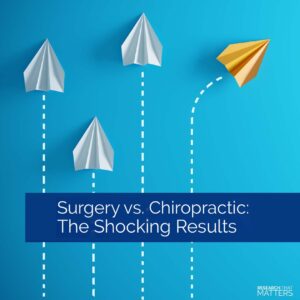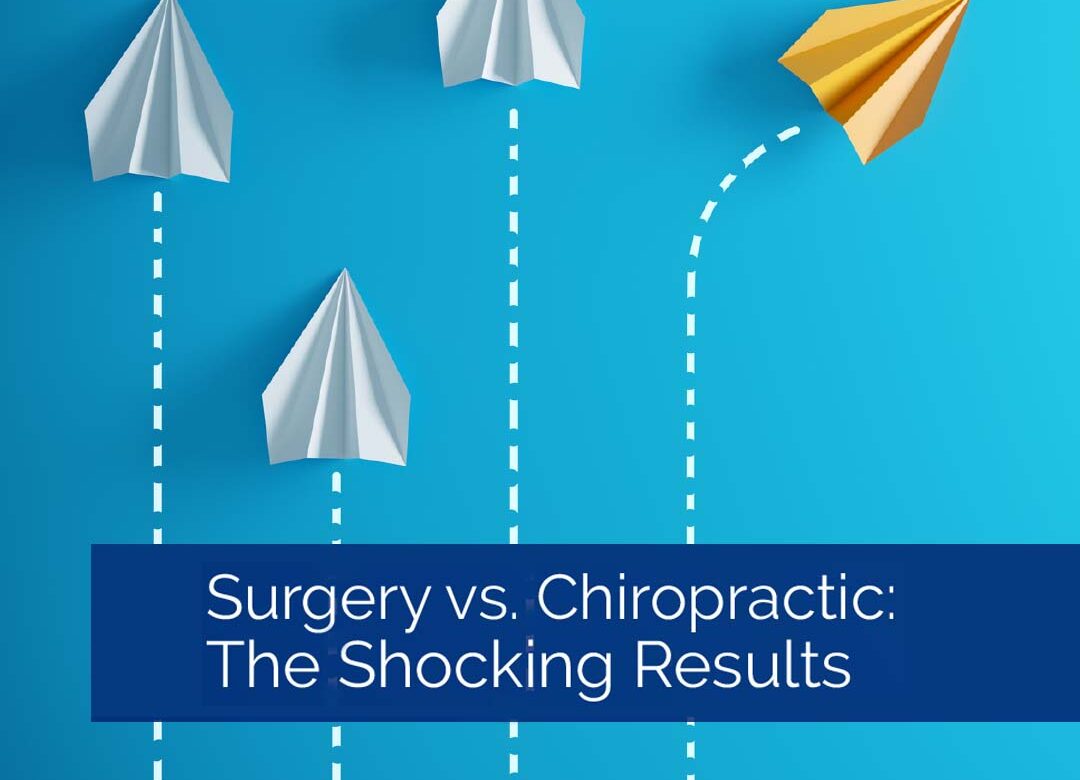section-02280fe
The Risky Business of Spinal Injections
 Bottom Line:
Bottom Line:
If you’ve suffered from pain in your arm or leg, it could be caused by a spinal disc pressing on one of your nerves. If a medical doctor recognizes a pinched nerve on your MRI, they might refer you for a spinal injection. While this seems like a normal process, new research has begun to show that spinal injections aren’t very effective at treating back pain, and the risks may far outweigh the rewards. Keep reading to discover a better path towards relief.
Why it Matters:
Spinal injections often can’t provide long term relief because they don’t address the cause of the pain: your pinched nerve. Reducing compression and opening space for the nerve is a better strategy. Chiropractic care can help improve the motion of your spine and decrease the irritation on your spinal nerves that causes pain. New research has found that chiropractic adjustments can provide more relief than injections, without any of the associated risks.
- Spinal injections have been shown to be ineffective at providing relief for low back pain.
- Chiropractic can offer more relief than spinal injections for people with lumbar disc herniations according to a paper published in JMPT.
- One study found Chiropractic patients experiencing up to 60% relief, while another discovered patients receiving spinal injections only reported 14% relief.
Next Steps:
The research is clear: before getting a spinal injection, it’s a smart decision to explore Chiropractic. We believe your body has an incredible ability to heal itself. Medications mask the symptoms, but to find lasting relief- you need to address the cause. If a spinal disc issue is affecting the life of you or someone you know, give us a call and get your life back!
Science Source(s):
section-3845968
Can Surgery Fix Your Back Problem?
 Bottom Line:
Bottom Line:
Over 90% of us will experience back pain during their life. Thankfully, less than 5% will need surgery. So why are so many operations being performed? And does surgery fix a back problem? You may be surprised to learn that an enormous number of back surgeries don’t give patients long-term relief. Jumping over less invasive conservative care options is often not a good idea and can result in a poor surgical outcome. In the medical world, this is known as “failed back surgery syndrome.”
Why it Matters:
The first part of successfully treating back pain is to identify the source of the pain. MRI’s are a fantastic tool to show areas of your spine that aren’t perfect, but they don’t do a very good joint at pinpointing what is causing your pain. And if a surgeon has difficulty identifying the source of your pain, the results can be disastrous. Research has discovered fewer than half of all spinal fusions are successful, and many don’t offer significant pain relief.
- Up to 94% of people will still have back pain after surgery.
- Nearly 20% of people will need a follow-up operation 10 years after surgery.
- Failed back surgery syndrome has been found in up to 21% of patients.
Next Steps:
If you’ve been recommended an operation, we encourage you to get a second opinion. You only have one spine, and the healthcare decisions you make today will affect your life for decades to come. The majority of people suffering from back pain can find relief without surgery, and research has continued to show that Chiropractic care is one of the most safe and effective options to help you on the road to relief.
Science Source(s):
section-8702f34
Top Medical Groups Are Now Supporting Chiropractic
 Bottom Line:
Bottom Line:
The opioid epidemic has led many leading medical groups to emphasize the importance of conservative care for low back and neck pain. The world’s largest medical society, the American College of Physicians, updated its low back treatment guide in 2017 to support conservative options, such as Chiropractic care. The guidelines were published in the prestigious Annals of Internal Medicine and have been adopted by many leading healthcare organizations.
Why it Matters:
Medical guidelines are now emphasizing the patients should only move to take Ibuprofen or muscle relaxants if other conservative options aren’t helping. New research has shown that medications such as acetaminophen are not very good at providing relief, and in many cases, aren’t even as effective as a placebo.
- The Agency for Health Care Research and Quality recommended spinal adjustments as the only safe, effective, and drugless initial treatment for back pain.
- A new article in the American Medical Association suggests Chiropractic as the preferred option for people with back pain.
- SPINE found nearly 75% of patients had significant improvement in their back pain with Chiropractic care, compared to only 17% who had medical care alone.
Next Steps:
Now more than ever, medical doctors and Chiropractors are working together to help patients get well and stay well. For over 100 years, Chiropractors have been focused on providing effective, safe, and natural healthcare solutions. Due to the risks and dangers of surgery and medications, the medical community has finally begun to support options such as Chiropractic that take a patient-first approach to care.
Science Source(s):
Acute Low Back Problems in Adults. Clinical Practice Guideline No.14. AHCPR Publication No. 95-0642
section-1bd1ad9
Surgery vs. Chiropractic: The Shocking Results
 Bottom Line:
Bottom Line:
Surgery is considered a last resort for the treatment of neck and back problems. The risks are significant, the costs are high, and the recovery is long and painful. If you haven’t found relief with physical therapy or medications for your back pain, you may think surgery is next on the list. Well, new research has shown that Chiropractic care should be considered first, and the results may surprise you.
Why it Matters:
It’s well known that the failure rate for spinal disc surgery is up to 20%. And to make things worse, the next step after a failed discectomy is typically a dangerous spinal fusion. So before exploring surgical options, we encourage you to be smart and consider Chiropractic care. Researchers found that patients who previously failed therapy and medications found just as much relief with Chiropractic care as they did with surgery while avoiding nearly all of the risks!
- The majority of patients who can’t find relief physical therapy or medications have experienced benefits with Chiropractic care.
- Patients may benefit from Chiropractic care just as much as if they underwent surgery, without any of the risks.
- Smart healthcare providers have begun to offer Chiropractic care before surgical options because of its safety and effectiveness.
Next Steps:
Before moving to medications, injections, or surgery, it’s smart to explore Chiropractic care. Chiropractic works with your body to help reduce the pain associated with spinal disc issues in your neck or back. By reducing inflammation, improving your spinal motion, and reducing the compression on your spinal nerves, Chiropractic can help you get well without any of the risks and dangers associated with drugs, injections, or surgery.
Science Source(s):









